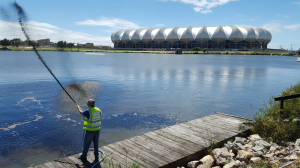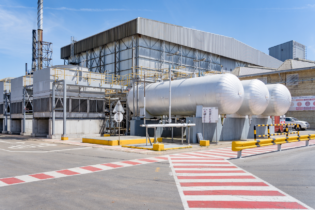“Some members of the public have also commented on improved water clarity, but this will change as the sludge continues to lift. We’re looking at ways to expedite the process and have the North End Lake remediated in the coming months.”
The organic clean-up of the largest freshwater lake in the Nelson Mandela Bay region is yielding positive results, with the water body set to be “swimmer-ready” during the course of this year.
In the past pollution levels North End Lake have made it unsuitable for swimming events where participants come into direct contact with contaminants. However water quality test results from the lake following bioremediation reveal a marked improvement in various critical parameters.
According to Rhino Water director Sarel Bam, whose company was appointed to conduct the organic clean-up of the lake, the toxic blue-green algae, faecal coliforms and E. coli levels dropped substantially between January and March.
The downward trend was significant, said Bam, and a clear indication that the North End Lake’s bioremediation was taking effect in spite of a continued influx of toxins and other pollutants into the lake. He added that anecdotal evidence such as a marked increase in the number of young fish, or fingerlings, also suggested an improvement.
The most recent test results from the North End Lake – taken since the bioremediation of the water body began last November – reveal that inorganic materials such as dissolved metals and minerals now meet the national SANS 241 specifications for drinking water. Algae and bacterial levels have also dropped significantly, although still remain above the acceptable standards for recreational use.
Pollutant sludge levels on the floor of the North End Lake have also decreased by up to 20cm, from depths of around 80cm, since the first phase of the project commenced. The second phase of the project which started on 6 January this year will continue until the end of June.
“Based on the data we have, we are on the right track,” said Bam. “Algae levels have improved substantially, while bacterial forms such as E. coli, faecal coliforms and Enterococci have also improved, but are not yet where we would like them to be.”
DWAF guidelines state that E. coli and faecal coliform colonies should be fewer than 130 per 100ml, while toxic blue-green algae levels should be less than six blue-green units per millilitre.









